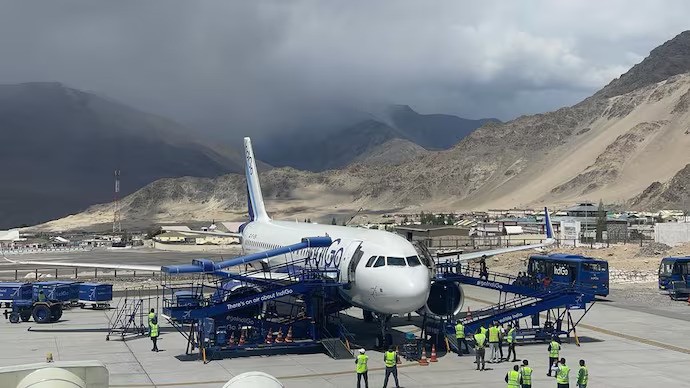Sucheta Roy, Pune
Leh Ladakh is known and famous for its chilling and pleasant temperature and as India’s cold desert has now sizzling daytime temperatures going almost 35 degree Celsius. It has become so hot now that Indian flights are announcing mass cancellations. Almost 12 flights as of now have been cancelled in the past three days and people on social media are also reporting flyers being stuck in the Leh airport.
Flights have faced cancellations due to the unprecedented weather which is linked to climate change and global warming. The flights could not take off due to a reduction in air density in the Leh region, which is making the operations impossible. People are also saying that for flights to function the cold desert of Leh is becoming too hot day by day. Leh being the highest commercial airport, witnessed disruptions in flight operations as temperatures went to 35 degrees Celsius, which also caused the high-altitude air to thin out, which was also very risky for safe aircraft operations.
With around 15-16 aircraft arrivals and departures daily, Leh experienced cancellations of flights from Saturday, followed by Sunday and Monday continuously. This a very rare phenomenon considering Leh’s location which is almost 11000 feet and where winter temperature drops to -20 degree Celsius.
The flights got cancelled because of air thining for which the air density reduced at Leh’s high altitude. The density of air shows the quality and concentration of air molecules in a given volume. The air density is decreased due to the combination of naturally low air pressure which elevates temperature and it further decreases air density.
The thinning of air signifies that the aircraft engines need to work harder to generate thrust and lift because of the limited availability of air molecules for intake and combustion. This increased power demand may exceed the aircraft’s capabilities, which makes the operations unsafe in such situations. This kind of temperature also decreases the availability of oxygen and that is why mountaineers rely on oxygen cylinders for breathing at high altitudes. Generally in Leh, the air pressure is naturally lower throughout the year and that’s the reason why any abnormal increase in temperature further decreases air density.
